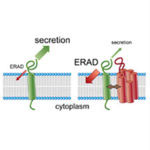
When the first multicellular organisms evolved, their cells needed to communicate with each other to control their growth and development.
MRC Laboratory of Molecular Biology
One of the world's leading research institutes, our scientists are working to advance understanding of biological processes at the molecular level - providing the knowledge needed to solve key problems in human health.
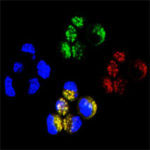
The deposition of misfolded proteins is a central characteristic of many devastating diseases including neurodegenerative diseases such as Alzheimer’s, Parkinson’s, Huntington’s, amyotrophic lateral sclerosis and prion diseases. In principle, improving the cells’ ability to deal with misfolded proteins should reduce the pathology in these diverse neurodegenerative diseases.
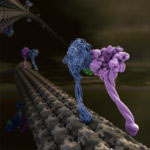
The first X-ray crystal structure of the motor domain of cytoplasmic dynein, a protein that uses the cellular energy from ATP to walk along microtubule tracks that run throughout the cell, has been solved.
Cytoplasmic dynein moves numerous cargos around the cell including proteins and RNAs that set up the cell polarity, membraneous organelles, aggregated proteins that are toxic unless collected and disposed of, and even whole nuclei.

Amyotrophic lateral sclerosis (ALS) is caused by the progressive dysfunction of specific nerve cells that control muscle movement. It belongs to a group of devastating neurodegenerative diseases including Alzheimer’s, Parkinson’s, Huntington’s and prion diseases. Each disease is caused by the progressive accumulation of specific proteins in an aberrant, misfolded shape. The formation of the protein deposits is somehow toxic to nerve cells but why and how they initially form is unclear.
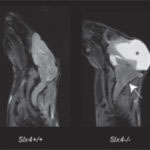
A group led by KJ Patel from the LMB, together with collaborators at the Wellcome Trust Sanger Institute and CRUK Cambridge Research Institute (CRI), have developed the first model for the human genetic illness Fanconi Anaemia (FA). This genetic condition results in abnormal development, bone marrow failure and a huge lifetime risk of developing cancer. At present the only long-term treatment for FA is bone marrow transplantation.
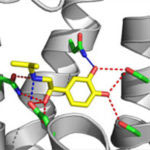
In a recent issue of Nature, the groups of Chris Tate and Andrew Leslie in the LMB’s Structural Studies Division, in collaboration with Gebhard Schertler now at the Paul Scherrer Institut, Switzerland, have reported the determination of the structures of the β1 adrenergic receptor (β1AR), a GPCR, when bound to four different clinically relevant agonists.